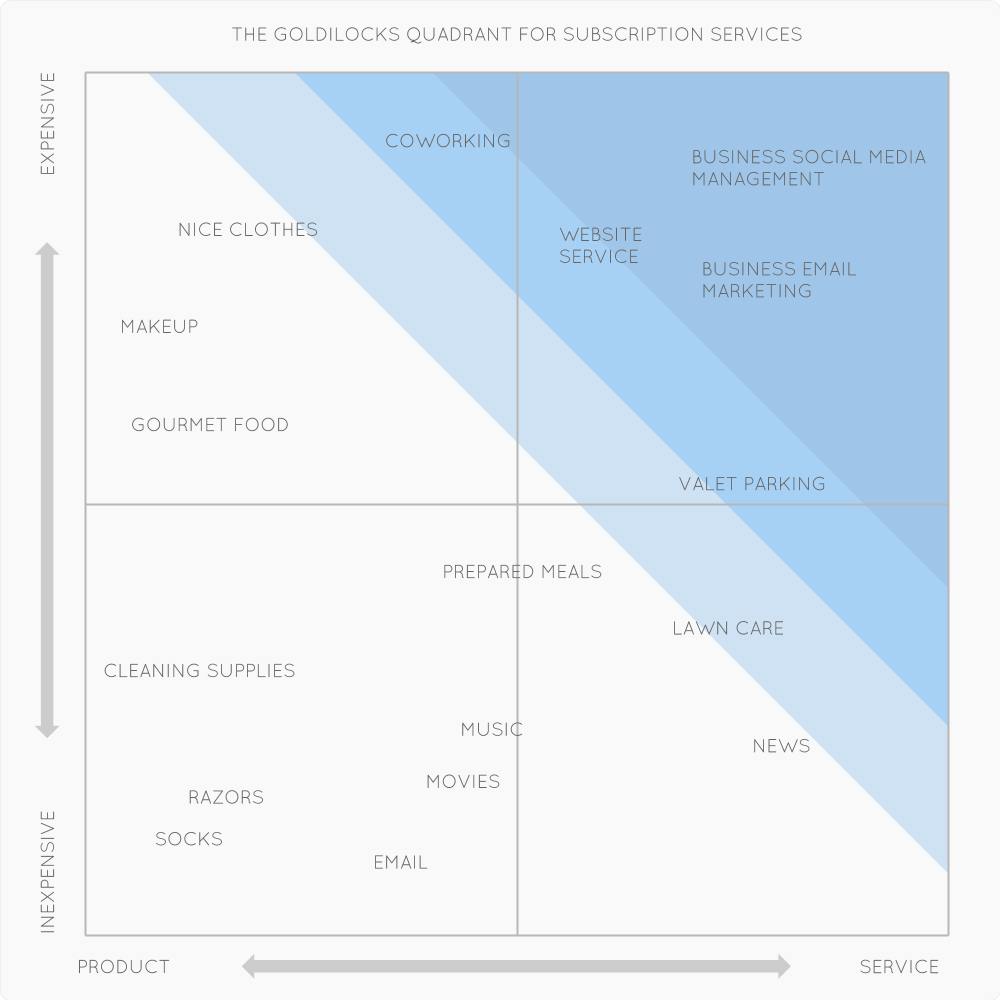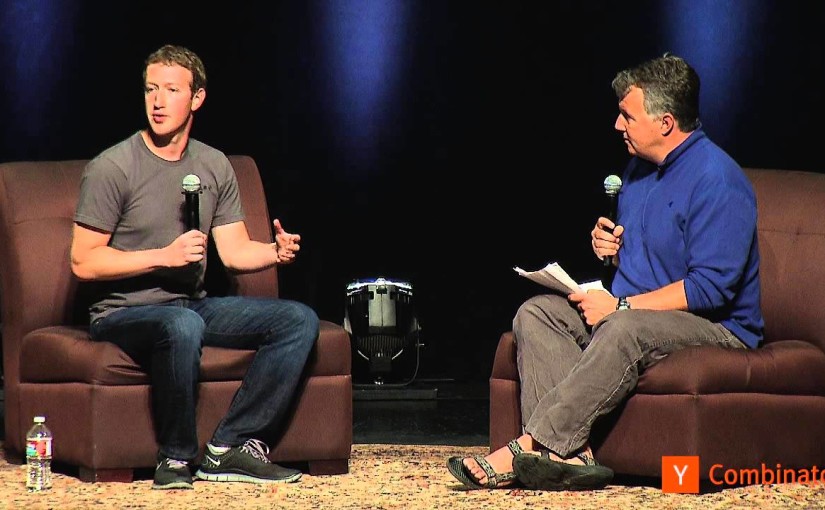I recently came across a new subscription service founded by the self-described “inventors of the revolutionary sockscription.” Yes, they deliver fresh socks to your doorstep every month.
There are officially subscriptions for every type of product and service. Music, movies, razors, clothing, vegetables, social media management, website service, valet parking, prepared meals – everything.
But there is a major problem with some of these subscription services, one we might go ahead and call the Goldilocks dilemma.
WHY SO MANY SUBSCRIPTIONS?
Those of us who either work in, or subscribe to, these types of services (Software-as-a-service, Marketing-as-a-service, Socks-as-a-service, Razors-as-a-service, etc.) are well versed in the terminology of the subscription economy:
One the consumer side, we hear phrases like: Month-to-Month; No contract; Cancel at any time; One low monthly fee.
As providers of these services, we talk about: Productized service; Recurring revenue (Monthly, Annualized, etc.); Scalability; Churn; Customer lifetime value; Customer acquisition cost; Et cetera, etc.
In reality, most subscriptions are product-and-service combinations with business models that rely on one key input: recurring revenue that rolls in by charging subscribers’ credit cards or bank accounts each month.
Consumers are drawn to subscriptions because they offer cost control, elegant user experiences, and long lists of features (some high value, some not-so-high value). Service providers yearn to create subscriptions because they offer the predictability of recurring revenue. But in order to efficiently run and market a subscription service, all sorts of constraints must be placed on the product – and therein lies the Goldilocks dilemma.
THE GOLDILOCKS DILEMMA
Across diverse fields from cognitive science and astrobiology to economics and pricing, the Goldilocks principle refers to something that falls within some reasonable margins instead of being at either extreme (“This porridge is too hot…this porridge is too cold…ahhhh, this porridge is just right!”). In short, we are all like Goldilocks – insofar as we want things to be “just right.”
The Goldilocks dilemma for subscription services can be summed up as follows:
When you charge a group of customers the same price for a recurring service, you must factor into your pricing the fact that some customers will pay and never hassle you, while some needy customers will pay and hassle you to no end. The hassle-free customers are paying for your costs of dealing with the needy customers. And unless you have a god-like ability to know EXACTLY how many of your customers are going to be good verses bad, you’re pricing is going to be off – both for you, and for your customers.
Subscription services suffer from the Goldilocks Dilemma to varying degrees. This is mostly a function of where they fall on the product-to-service spectrum, and the cheap-to-expensive spectrum. This can be visualized using the admittedly rough and imprecise Goldilocks quadrant, and I’ve included a sample below:

As you move into the top right of the quadrant (more like a service + more expensive), you run a higher risk of encountering problems due to the Goldilocks dilemma. It’s also most common to find B2B subscription services in this area, because they’re usually more expensive.
SO, WHAT’S THE PROBLEM?
Firstly, subscription service pricing is inherently unfair. Why? Because in order to make a profit, a company must first cover all their expenses. If a company sells a sock subscription, it will lose money on the picky customers who frequently send socks back for replacement. “These socks are too thin,” they might say.” “And these socks are too thick”. And it will be the reasonable customers, the ones who pull up their damn socks and go to work, that pay for it.
Secondly, subscription services are forced to construct rigid product barriers to control their costs. Customers are sold one-size-fits-all packages, because otherwise you begin to lose the efficiency that underpins your entire business model. Put differently, it’s hard to scale if you don’t constrain your features and service. Again, this unfairly punishes the easygoing customers for the heightened service demands of customers who need more hands-on service. To continue with our metaphor, the bad customers eat all the warm porridge, and the good customers are castigated to the support forums.
Last, but not least, the Goldilocks dilemma leads to high instances of customer churn for the service provider. Because you’re selling a one-size-fits-all service that’s expensive and burdensome to service – customers will take their business elsewhere when their patience is tried too many times. Some companies never solve this problem, and they die. Many “productized” web services companies attempt to solve this problem by hiring tens or hundreds of salespeople to feed more and more meat into the grinder. The reality for these companies is that they don’t build those giant sales teams to grow, they build them to fight churn – their most important metric.
Companies offering subscription services that suffer from the Goldilocks dilemma truly do mean well. They are indeed solving a perceived problem: it’s expensive, time consuming and burdensome to hire a company or individual to provide the same type of service. It’s also hard to find the right one to hire (see our post on finding the right contractor). But in the end, for most customers, these types of subscription services almost always fall short – especially when it comes to higher margin services.
WHAT’S THE SOLUTION?

There are lots of ways to address the problems caused by the Goldilocks dilemma: expanded feature sets with different pricing tiers, paid consultations, premium support, etc. These strategies allow service providers to keep costs low for the customers who don’t put a burden on the support staff.
But, some services simply shouldn’t be subscriptions in the first place. If you’re looking for candidates of services that shouldn’t be subscriptions, use the Goldilocks quadrant to find them. Not surprisingly, website service is one of them. We believe on-demand alternatives will displace these subscription services – that’s why we’re launching our new instant website service app.
With the advent of businesses offering subscription alternatives in virtually every product and service market, subscriptions seemed like the way of the future. But, the rapidly emerging on-demand economy will push many subscriptions out of the way. Why pay a monthly subscription for a highly constrained service when you can get the same high quality service instantly, and only pay for exactly what you need?
Gazing at her smartphone screen instead of a bear’s porridge bowl, a modern-day Goldilocks might say, “This subscription service is too expensive…this subscription service is too limited…ahhhh, this on-demand service is just right!”
To learn about our own struggles with Goldilocks, read our Velocity Pricing post.









